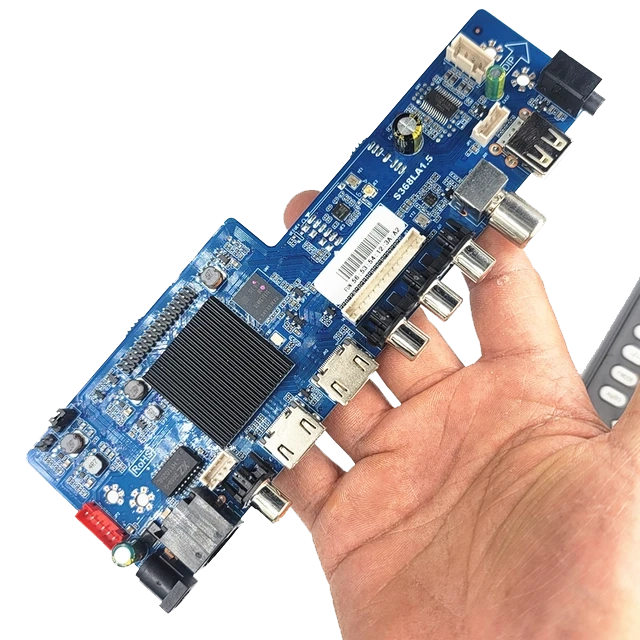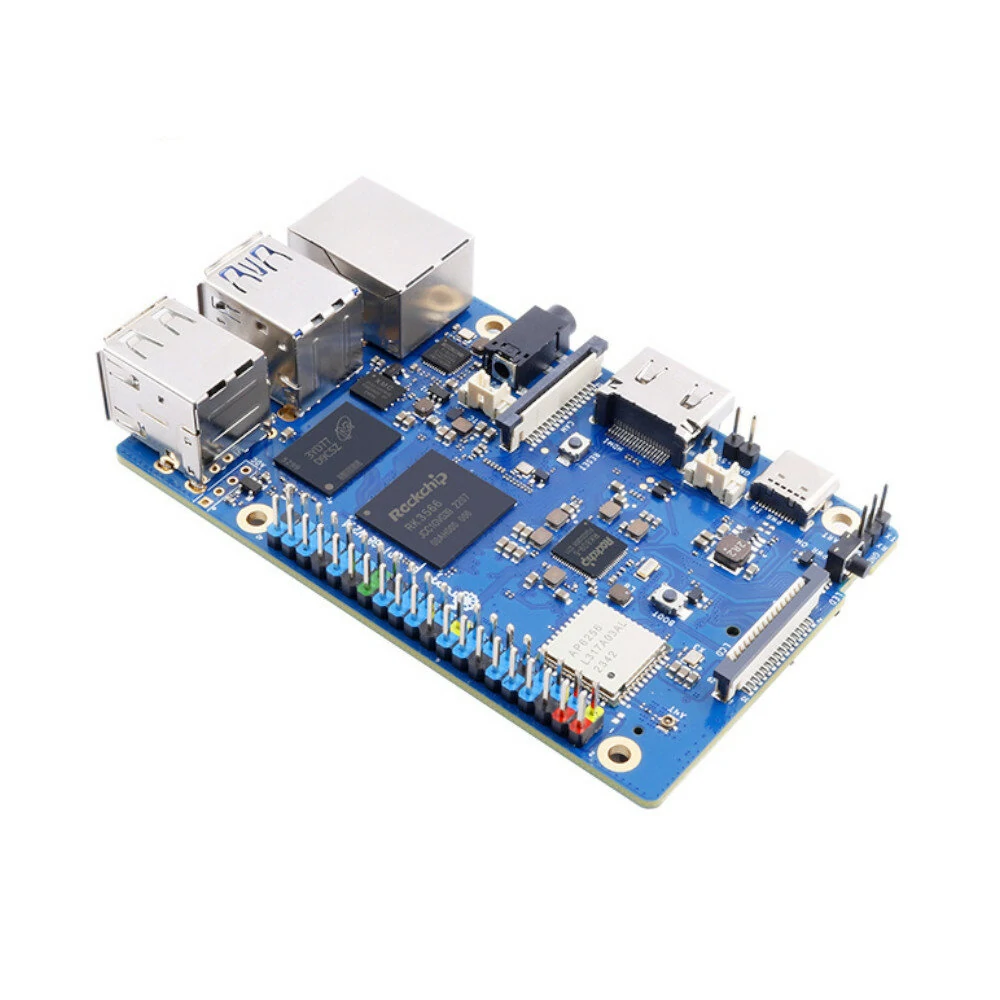
Embark upon the field of system customization for Android for Single Board Computers. This in-depth guide will grant you the key concepts and effective tactics to proficiently fabricate your own Android-enabled SBC tasks. From knowing ground rules of Android development to delving into sophisticated world of SBC systems, this guide will support your a productive programming journey.
- Explore the diverse of available SBC systems and their respective resources.
- Gain proficiency in essential Android application toolsets, including Android Studio, SDKs, and emulators.
- Absorb the intricacies of preparing your SBC platform for seamless Android processing.
Inspect best practices for creating robust and stable Android tools tailored for SBC hardware constraints.
Creating Android Software on Single Board Computers
Capitalizing on features of a Single Board Computer (SBC) for Android application engineering is an increasingly emerging approach. These compact and versatile instruments provide a cost-effective foundation for creation, enabling innovators to leverage the capabilities of Android without the need for a traditional machine. By applying the SBC's resources such as its processor, memory, and connectivity options, developers can assemble Android applications that range from simple utilities to more complex systems. The faculty to customize the hardware and software environment further magnifies the flexibility of SBCs for Android development, making them a useful tool for both professionals.
Harnessing Android Development Boards for IoT
For budding creators delving into the world of Internet of Things (IoT), Android dev boards present a powerful platform to bring their creative ideas to life. These compact boards, often equipped with sophisticated hardware and accessible software development kits (SDKs), provide a stable foundation for building a wide range of IoT products. From home automation systems to utility monitoring services, Android dev boards empower collectives to implement cutting-edge IoT projects with simplicity.
- Harnessing the extensive Android ecosystem, developers can engage a vast library of frameworks specifically designed for IoT projects. This wealth of resources allows for simplified development and facilitates the creation of intricate IoT solutions.
- As well, Android dev boards often feature built-in connectivity options such as Wi-Fi, Bluetooth, and cellular, facilitating seamless linkage with other devices and cloud platforms. This connectivity capability is fundamental for enabling real-time data collection and remote monitoring of IoT networks.
- Last but not least, the public resources of Android dev boards fosters a thriving ecosystem of developers, providing ample backing for tackling any challenges encountered during the development process.
Investigating Android SBCs in Media Contexts
The sphere of multimedia applications is constantly transforming, pushing the boundaries of what's practicable. In this dynamic landscape, Android System-on-Chips (SBCs) have emerged as a effective choice for developers seeking to build innovative and engaging experiences.
The mentioned compact yet equipped SBCs grant a singular blend of processing force, connectivity, and multimedia abilities that make them excellent for a large group of applications.
With respect to high-definition video playback to live audio processing, Android SBCs are conditioned to handle the expectations of today's multimedia landscape.
- Moreover, their open-source nature furnishes developers to personalize hardware and software to satisfy specific application requirements.
- The indicated level of elasticity creates opportunities for developers to go beyond the limits of multimedia innovation.
Discover Advanced Android Tweaks with SBCs
A development board exemplified by the Raspberry Pi or another Nexus Player offers a unique opportunity to adapt your Android experience. By interfacing with the underlying platform, you can reshape everything from the kernel to specific apps. This level of command allows builders to push boundaries and develop truly tailored Android arrangements. Whether you're looking to boost your device's performance, research new options, or simply answer your curiosity, a dev board can deliver a world of avenues.
- Acquire knowledge of the fundamentals of Android development
- Develop custom ROMs and kernels
- Experiment with new apps and features
- Integrate your device to supportive modules
Fixing Bugs in SBC Android Systems
When working with Android development on Single Board Computers (SBCs), you might encounter a variety of challenges. These can range from simple configuration errors to complex software bugs. Effective debugging and troubleshooting are crucial for identifying the root cause of these problems and restoring your Android environment to full functionality. Make use of the vast resources available online, such as forums and documentation, to gain insights into common issues faced by other developers in similar setups.
Start by carefully reviewing your system logs for any error messages or warnings that might provide clues about the problem. Adopt a effective logging strategy within your Android application to capture relevant information during runtime. This can help pinpoint specific areas where errors are occurring. Don't hesitate to explore different configurations and settings to see how they affect the behavior of your system.
- Allocate time in understanding the hardware capabilities of your SBC, as limitations in processing power or memory can contribute to Android performance issues.
- Craft a strong understanding of the Android SDK and its resources to effectively debug your applications.
- Stay updated with the latest editions of both Android and your SBC's firmware, as these often include bug fixes and performance improvements.
Optimizing Performance on Android SBCs
When applying Android-based microcontroller units embedded boards, maximizing throughput is paramount. To achieve this, developers and engineers can leverage a spectrum of strategies. This involves systematically configuring software and hardware components to guarantee seamless processing. Key areas for refinement include capacity planning, power consumption, network connectivity, and application speed.
- Accentuating real-time computation is paramount for applications that demand immediate feedback.
- Exploiting lightweight structures can materially reduce memory usage, thereby improving overall speed.
Regularly patching the Android operating system and programs is important for addressing security loopholes and securing functionality improvements.
Implementing Android SBC Security Best Practices
Securing your Android systems against threats is paramount. Applying sound security best practices for your Android System-on-a-Chip (SBC) setup can significantly mitigate risks. Regularly patch your SBC's software to address weaknesses. Develop robust access mechanisms to govern user permissions and network transmission. Conduct consistent security audits to identify potential pitfalls and implement necessary mitigations.
- Inform your users about common security threats and best practices for protecting their devices.
- Protect sensitive data at rest and in transit using strong systems.
By adhering to these best practices, you can create a more secure environment for your Android SBC.
Harnessing Next-Generation Android SBC Solutions
The world of embedded Platforms (SBCs) provides a compelling platform for developing next-generation Android applications. By combining the power of Android with the unique capabilities of SBCs, developers can create sophisticated solutions across diverse areas. This approach offers extraordinary flexibility and customization options, allowing the development of bespoke applications that cater to specific parameters. Whether it's for medical devices, SBCs coupled with Android development open up a broad range of possibilities.
- Applying the low-power nature of SBCs for resource-constrained environments.
- Formulating Android applications with instantaneous responsiveness for time-sensitive tasks.
- Connecting Android's user interface capabilities with custom hardware peripherals for a harmonious experience.
The combination of Android and SBCs empowers developers to push the limits of innovation, generating transformative applications that reshape various fields.
Shaping Android's Evolution with SBCs
The domain of Android development is rapidly evolving, with Single Board Computers (SBCs) emerging as a prominent force. These compact and versatile appliances offer developers a powerful platform for experimentation, prototyping, and even full-scale application deployment. With their affordability, expandability, and dynamic ecosystems, SBCs are poised to transform the way we create Android applications. Developers are enthusiastically embracing this advanced paradigm, unlocking a world of possibilities for creating immersive user experiences.
From embedded applications to IoT devices, SBCs provide the perfect base for a wide range of Android projects. Deploying the power of open-source software and hardware, developers can generate innovative solutions that deal with real-world challenges.
Inspirational Android SBC Examples
Android Single Board Computers (SBCs) are powerful little machines that can be used to build a wide range of solutions. Since you're a student, there are plenty of fun project ideas to explore. One trending category is IoT projects, where you can use an Android SBC to manage your lighting. You could also form a individual media center, showcase content on a larger screen, or even tinker with robotics and software development.
- Several Some android board Diverse Multiple
- A few other ideas include establishing educational products, constructing wearable technology, or even joining open-source applications. The possibilities are truly extensive.
